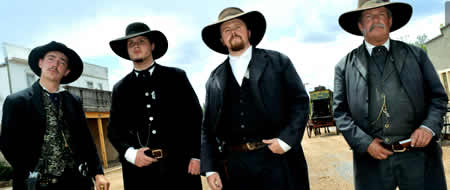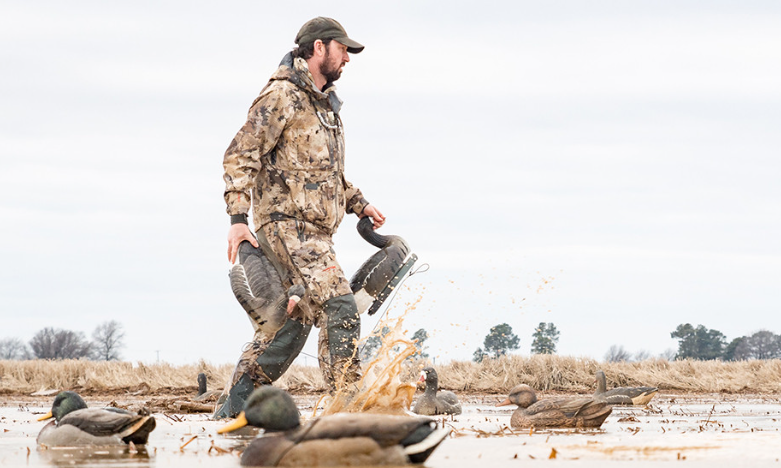Deadly-force Encounter Training Lessons through the Lens of Famous Old West clash.
Story and Photos by Paul PawelaNo other gunfight has received more attention in America than the one that happened in Tombstone, Arizona, on October 26, 1881, at 3 pm. And while the gunfight at the OK Corral took place 140 years ago this month, it is a classic example of what to do – and what not to do – in a deadly force encounter.
To understand the subject of deadly force, it is imperative to look at real-world gunfights that people can identify with. Two huge blockbuster movies about the gunfight at the OK Corral were made in the 21st century, one being Wyatt Earp starring Kevin Costner, and the other being Tombstone starring Kurt Russell. It is safe to say that a large part of the public has seen one or both movies, and therefore has some knowledge of the events that took place that day.
Many lessons can be learned from the famous gunfight. For example, the first contributing factor that led to the fateful confrontation between the outlaws and the lawmen was alcohol. The lesson learned should be obvious:
Guns and alcohol should never mix. During this period there was an ordinance in the city of Tombstone forbidding people from carrying weapons on their person in the city. Another hard lesson learned: Debatable or not, when it comes to Second Amendment issues and constitutional rights, always obey the law.
The narrative of the gunfight at the OK Corral was that the two parties simply did not like one another and were very much at odds, getting into verbal altercations and physical assaults.
Finally, the trouble came to a head when one party threatened to kill the members of the other party on the spot if he saw them on the street. The learning objective here is that when one has the responsibility of carrying a weapon, they must do everything in their power to avoid any kind of trouble. Every attempt should be made to deescalate the situation, but if you cannot avoid trouble, you should prepare for the fight.

Between the two parties, the coolest head was Virgil Earp; all indications were that he did everything he could to avoid a gunfight. Upon approaching the Cowboys, he gave a loud verbal command, saying, “Throw up your hands.” (That command would become invaluable later on in court, as it would be used as evidence that Virgil Earp did not just walk up and gun down the Cowboys, as the opposing party would testify.)
Through much study of the incident, I believe that what set the gunfight in motion was Doc Holliday. After the command was given by Virgil Earp, there was a brief silent lull before all hell would break loose. Under his coat, Holliday was hiding a double-barreled 10-gauge shotgun; upon getting it ready for action, he cocked both triggers at the same time.
From the lawmen’s point of view, they knew Billy Clanton and Frank McLaury were good pistol shots, but their marksmanship had not prepared them for a real-life close-up gunfight, and they seldom practiced drawing from their holster. This is a very important lesson learned. Many people go to shooting ranges and shoot targets that are not shooting back; those same people will never take the time to learn how to draw from a holster and move while they are shooting. This is why I think the most valuable type of training is force-on-force training, utilizing man-marking cartridges that come out of real guns.
WHEN A GUNFIGHT commences, a physical phenomenon called “fight or flight” often takes place. Basically, a person either stays and fights, or runs away. This was the case with two of the Cowboys. Billy Claiborne broke and ran away altogether, while the Cowboy that started most of the feud, Ike Clanton, ran toward Wyatt Earp after the shooting had already started, stating he was unarmed and did not want to fight.
It is important to note that Ike Clanton grabbed Wyatt Earp’s gun hand, causing Earp to discharge a round into the ground. Why is this important? Because all firearms training should include weapon retention skills. Also, it’s important to note that in the midst of the melee, Earp had the sense to realize that Clanton was indeed unarmed and therefore had no reason to shoot him.
Once again, I cannot emphasize force-on-force training enough. For those interested in the gunfight itself, you can find a shot-by-shot breakdown by searching online, but here’s the gist: 30 total rounds were fired, resulting in the death of the three Cowboys who didn’t flee (Billy Clanton and the McLaury brothers), and wounding Virgil and Morgan Earp and Doc Holliday. Both Clanton and Tom McLaury were medically treated but died from their wounds. The lesson learned here: get basic medical training so you’ll be able to help yourself and your comrades.
After receiving medical attention, the next step is to seek legal counsel. As is still the case today, back then it was not just about surviving the gunfight or deadly encounter, but also surviving the ensuing legal process. Even though the Earps were acting as lawmen, they were charged for murder and had to undergo a grand jury hearing. They would eventually be cleared, but they still had to pay a lot of money in legal and bond fees that was never recouped. Lesson learned: if you don’t have gun insurance, like the type that Armed Citizens’ Educational Foundation provides, get it.
Here are a few more key lessons that we can take away from the gunfight at the OK Corral:
- Shoot until you stop the threat – anticipate firing multiple rounds. Even if the enemy is hit multiple times, that doesn’t mean they are out of the fight. Frank McLaury, known to be the most dangerous shot, was struck in the stomach by Wyatt Earp, but even with a mortal wound he was able to shoot Virgil, Morgan and Doc Holliday.
- Practice shooting with your non-dominant hand. Billy Clanton was shot four times in the chest, belly, arm and wrist, and with all those wounds he was able to do a pistol transition and continue shooting with his nondominant hand until he was out of bullets.
- Always have a backup gun. Doc Holliday fired a shotgun blast that ripped Tom McLaury wide open, but it did not kill him instantly. After discharging the shotgun, Doc thought his primary weapon failed him and he immediately went to his backup and continued to fire at the other two Cowboys.
- Finally, never drop your guard.
Editor’s note: For realistic self-defense training, see assaultcountertactics.com. Author Paul Pawela is a nationally recognized firearms and self-defense expert.












